
This resource provides information about commutative and associative properties of addition.
- Subject:
- Mathematics
- Material Type:
- Reading
- Provider:
- LearningWave Communications
- Date Added:
- 12/01/2023

This resource provides information about commutative and associative properties of addition.

This pathway explores the properties of light. Light is described as a wave which is able to reflect, refract and diffract when it encounters surfaces. Applications of lights wave properties such as single and double slit diffraction are discussed, as well as how different colours occur as combinations of different frequecnies of light. Probelms are provided to check for understanding.
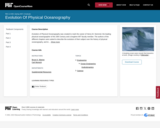
A college course featuring instructor's notes and textbook resources on the history of physical oceanography.
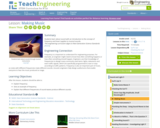
In this lesson, students learn about sound. Girls and boys are introduced to the concept of frequency and how it applies to musical sounds.
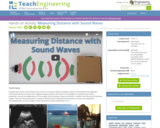
Students learn about sound waves and use them to measure distances between objects. They explore how engineers incorporate ultrasound waves into medical sonogram devices and ocean sonar equipment. Students learn about properties, sources and applications of three types of sound waves, known as the infra-, audible- and ultra-sound frequency ranges. They use ultrasound waves to measure distances and understand how ultrasonic sensors are engineered.

The oceans are a source of renewable energy. Tidal energy, wave energy, thermal energy and methane hydrates are all described in this animation.

A wonderful PBS biography of a great man. This contains many personal touches, yet does a fine job of describing Bohr's scientific work. But it's best at Bohr the man. Nice quotes, one in the middle, one at the end.

Explore the wonderful world of waves! Observe a string vibrate in slow motion. Wiggle the end of the string and make waves, or adjust the frequency and amplitude of an oscillator.

Students can observe the properties of a wave with different variables. Students can experiment with the type of end, damping factor, and tension in the string. Possible teacher lesson plans are included at the bottom of the page.

An interactive simulation that teaches about waves, frequency, and amplitude by observing the waves and vibrations of a string while changing variables like distance, speed, fixed or unfixed ends, and more. This simulation can either be downloaded or played online and includes handouts, lesson plans, and additional materials.

An explanation of and animation depicting the propagation of an electromagnetic wave through a material medium.
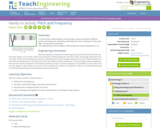
To further their understanding of sound energy, students identify the different pitches and frequencies created by a vibrating ruler and a straw kazoo. They create high- and low-pitch sound waves.

Psychology is designed to meet scope and sequence requirements for the single-semester introduction to psychology course. The book offers a comprehensive treatment of core concepts, grounded in both classic studies and current and emerging research. The text also includes coverage of the DSM-5 in examinations of psychological disorders. Psychology incorporates discussions that reflect the diversity within the discipline, as well as the diversity of cultures and communities across the globe.Senior Contributing AuthorsRose M. Spielman, Formerly of Quinnipiac UniversityContributing AuthorsKathryn Dumper, Bainbridge State CollegeWilliam Jenkins, Mercer UniversityArlene Lacombe, Saint Joseph's UniversityMarilyn Lovett, Livingstone CollegeMarion Perlmutter, University of Michigan


By the end of this section, you will be able to:
Describe important physical features of wave forms
Show how physical properties of light waves are associated with perceptual experience
Show how physical properties of sound waves are associated with perceptual experience

A collection of several pages explaining the principles which underlie Rayleigh scattering of light.
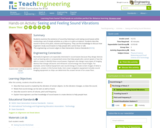
Students examine the existence of sound by listening to and seeing sound waves while conducting a set of simple activities as a class or in pairs at stations. Students describe sound in terms of its pitch, volume and frequency. They use this knowledge to discuss how engineers study sound waves to help people who cannot hear or talk.
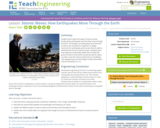
Students learn about the types of seismic waves produced by earthquakes and how they move the Earth. The dangers of earthquakes are presented as well as the necessity for engineers to design structures for earthquake-prone areas that are able to withstand the forces of seismic waves. Students learn how engineers build shake tables that simulate the ground motions of the Earth caused by seismic waves in order to test the seismic performance of buildings.
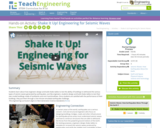
Students learn about how engineers design and build shake tables to test the ability of buildings to withstand the various types of seismic waves generated by earthquakes. Just like engineers, students design and build shake tables to test their own model buildings made of toothpicks and mini marshmallows. Once students are satisfied with the performance of their buildings, they put them through a one-minute simulated earthquake challenge.

This pathway explores the concept of simple harmonic motion. The pendulum and spring are used as foundational examples that are used to develop more complex models. Advanced application such as resonsnce are discussed